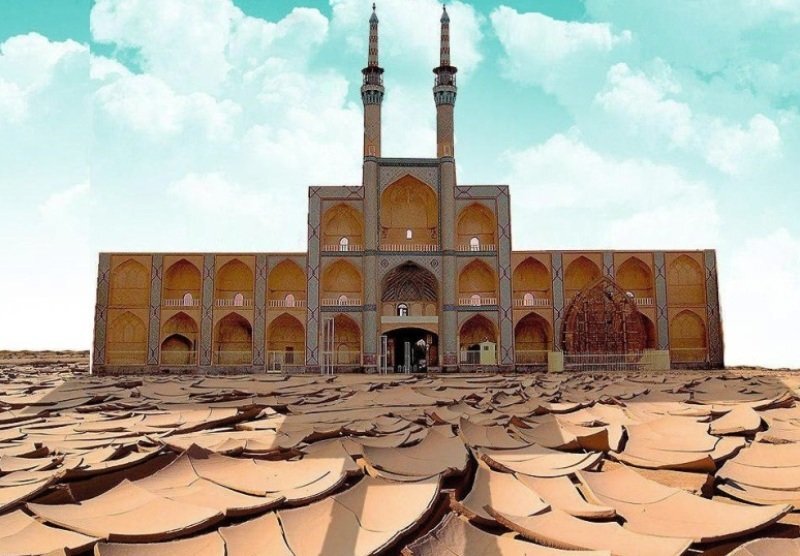Are Iran's actions sufficient for adapting to climate change?

TEHRAN – Climate change has been a major environmental concern for decades, and international agreements have required countries, including Iran, to reduce greenhouse gas emissions and use fossil fuels. However, some experts believe that our country's actions in this area have been insufficient.
Although climate change and global warming may occur as part of natural processes due to fluctuations in sunlight intensity, deviations in the Earth's path, and volcanic activity; after the Industrial Revolution and the increasing consumption of fossil fuels, the earth is increasingly under the impact of human activities.
Greenhouse gases emitted from sources such as cars, airplanes, landfills, etc., cause global warming in the long run, and in the short term, will cause more severe and unusual weather events such as increased floods and droughts.
Since 1992, climate change has attracted the world's attention, following the UN Convention on Climate Change, which aims to stabilize the volume of greenhouse gases in the Earth's atmosphere to prevent future climate problems.
The Paris Agreement was ratified in 2015 with the participation of 174 countries and the European Union within the framework of the United Nations Framework Convention on Climate Change.
The purpose of the Paris Agreement is to control climate change by reducing greenhouse gas emissions by countries and preventing global warming by more than 2 degrees Celsius and trying to limit it to 1.5 degrees Celsius. Currently, Iran is a member of the international treaty.
Iran ranks sixth greenhouse gas emitter in the world.Hossein Khajehpour, a faculty member at the Sharif University of Technology, pointing to the impact of human action and greenhouse gas emissions on climate change by 50 percent, highlighted that the remaining 50 percent is beyond human control and solar activity is the most important factor.
Not serious actions taken on reducing climate change in Iran, while developed countries are taking ambitious action nationally, with 36 countries seeking to zero greenhouse gas emissions; so that Iran ranks sixth greenhouse gas emitter in the world, he explained.
Referring to the 40 percent reduction in greenhouse gas emissions in the European Union, he said that “These changes make us know that oil can be used other than incineration and the country can take advantage of opportunities in this area.”
Amir Sarkardeh, a meteorologist, stated that in temporal variability, the rainfall that should occur during the year for a city falls in a few days, and in spatial variability, annual precipitation decreases than before.
Criticizing the infrastructure for adaptation to climate change in the country, he said that “While everyone in the world is concerned about climate change, there has been no adaptation policies in the country, as well as crisis management.”
Iran working with Green Climate Fund
The Department of Environment (DOE) is working with the United Nations Green Climate Fund (GCF), under the auspices of the Food and Agriculture Organization of the United Nations (FAO), to reduce the effects of climate change.
The Food and Agriculture Organization of the United Nations (FAO) and the Department of Environment (DOE), as the National Designated Authority (NDA) of Green Climate Fund (GCF), partnered to bring together local, national, and international stakeholders in a three-day workshop, the last one in a series of iterative events held under the project "Green Climate Fund Readiness and Preparatory Program of Iran."
The GCF Readiness Project has contributed to the Low Carbon Economy and Climate Change Outcome of the current United Nations Development Assistance Framework and has been able to achieve all of its planned results over the past two years. The project focused on empowering the NDA and strengthening capacity in the country. Moreover, different mechanisms, procedures, frameworks, and strategies were developed during the project’s lifetime.
Sustainable Development Goal
The Sustainable Development Goal 13 is a global call to action to end poverty, protect the earth’s environment and climate, and ensure that people everywhere can enjoy peace and prosperity; it includes “strengthening resilience and adaptive capacity to climate-related hazards and natural disasters in all countries, Integrate climate change measures into national policies, strategies, and planning.
Improving education, awareness-raising, and human and institutional capacity on climate change mitigation, adaptation, impact reduction, and early warning; implement the commitment undertaken by developed-country parties to the United Nations Framework Convention on Climate Change to a goal of mobilizing jointly $100 billion annually by 2020.
Promoting mechanisms for raising capacity for effective climate change-related planning and management in the least developed countries and small island developing States, including focusing on women, youth and local and marginalized communities.”
FB/MG
